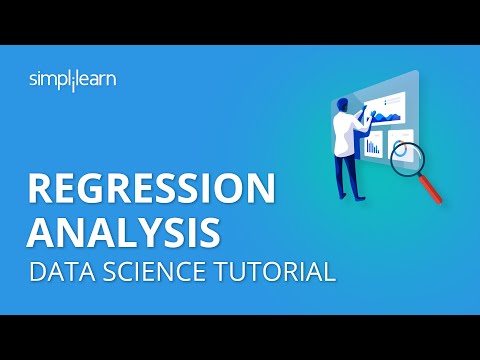Contents:


A goodness-of-fit test helps you see if your sample data is accurate or somehow skewed. Discover how the popular chi-square goodness-of-fit test works. Try it now It only takes a few minutes to setup and you can cancel any time. A one-tailed test, showing the p-value as the size of one tail.
Phyllosphere microbiome induces host metabolic defence against … – Nature.com
Phyllosphere microbiome induces host metabolic defence against ….
Posted: Thu, 04 May 2023 15:32:49 GMT [source]
The one-tailed test gets its name from testing the area under one of the tails of a normal distribution, although the test can be used in other non-normal distributions. A one-tailed test is appropriate if you only want to determine if there is a difference between groups in a specific direction. So, if you are only interested in determining if Group A scored higher than Group B, and you are completely uninterested in possibility of Group A scoring lower than Group B, then you may want to use a one-tailed test. The main advantage of using a one-tailed test is that it has more statistical power than a two-tailed test at the same significance level. In other words, your results are more likely to be significant for a one-tailed test if there truly is a difference between the groups in the direction that you have predicted. This is because only one tail of the distribution is used for the test.
Sign up or log in
Before doing so, consider the consequences of missing an effect in the other direction. Imagine you have developed a new drug that you believe is an improvement over an existing drug. You wish to maximize your ability to detect the improvement, so you opt for a one-tailed test. In doing so, you fail to test for the possibility that the new drug is less effective than the existing drug. The consequences in this example are extreme, but they illustrate a danger of inappropriate use of a one-tailed test. A one-tailed test is used to ascertain if there is any relationship between variables in a single direction, i.e. left or right.
Adam Hayes, Ph.D., CFA, is a financial writer with 15+ years Wall Street experience as a derivatives trader. Besides his extensive derivative trading expertise, Adam is an expert in economics and behavioral finance. Adam received his master’s in economics from The New School for Social Research and his Ph.D. from the University of Wisconsin-Madison in sociology. He is a CFA charterholder as well as holding FINRA Series 7, 55 & 63 licenses. He currently researches and teaches economic sociology and the social studies of finance at the Hebrew University in Jerusalem. Suppose that you suspect that a particular class’s performance on a proficiency test is not representative of those people who have taken the test.
One-tailed test, as the name suggest is the statistical hypothesis test, in which the alternative hypothesis has a single end. On the other hand, two-tailed test implies the hypothesis test; wherein the alternative hypothesis has dual ends. On the other hand, if our question is whether Mr. Bond is better than chance at determining whether a martini is shaken or stirred, we would use a one-tailed probability. What would the one-tailed probability be if Mr. Bond were correct on only \(3\) of the \(16\) trials? Since the one-tailed probability is the probability of the right-hand tail, it would be the probability of getting \(3\) or more correct out of \(16\). This is a very high probability and the null hypothesis would not be rejected.
The p-value was introduced by Karl Pearson in the Pearson’s chi-squared test, where he defined P as the probability that the statistic would be at or above a given level. This is a one-tailed definition, and the chi-squared distribution is asymmetric, only assuming positive or zero values, and has only one tail, the upper one. In the James Bond case study, Mr. Bond was given \(16\) trials on which he judged whether a martini had been shaken or stirred. From the binomial distribution, we know that the probability of being correct \(13\) or more times out of \(16\) if one is only guessing is \(0.0106\). Figure \(\PageIndex\) shows a graph of the binomial distribution.
The type of alternative hypothesis Ha defines if a test is one-tailed or two-tailed. In a one-tailed test, the chances of the rejection of the null hypothesis are higher than a two-tailed test. In a two-tailed test, differences in both directions are discovered but not the direction of the difference. One-tailed tests require a priori knowledge about the direction of the effect, whereas two-tailed tests do not. One-tailed tests detect an effect in one specific direction, while two-tailed tests consider effects in both directions. The key differences between these two tests can help to do research and experiments properly as both of them are very common processes used for testing.
The null hypothesis is the measurement that the analyst hopes to reject. The alternative hypothesis is the claim made by the analyst that the portfolio manager performed better than the S&P 500. If the outcome of the one-tailed test results in rejecting the null, the alternative hypothesis will be supported. On the other hand, if the outcome of the test fails to reject the null, the analyst may carry out further analysis and investigation into the portfolio manager’s performance. A one-tailed test is a statistical hypothesis test set up to show that the sample mean would be higher or lower than the population mean, but not both.
A null hypothesis is a type of statistical hypothesis that proposes that no statistical significance exists in a set of given observations. A two-tailed test is the statistical testing of whether a distribution is two-sided and if a sample is greater than or less than a range of values. When using a one-tailed test, the analyst is testing for the possibility of the relationship in one direction of interest and completely disregarding the possibility of a relationship in another direction. Using our example above, the analyst is interested in whether a portfolio’s return is greater than the market’s. In this case, they do not need to statistically account for a situation in which the portfolio manager underperformed the S&P 500 index.
Because 0 is included in the interval, it refutes my conclusion from the test. A Z-score numerically describes a value’s relationship to the mean of a group of values and is measured in terms of the number of standard deviations from the mean. If a Z-score is 0, it indicates that the data point’s score is identical to the mean score whereas Z-scores of 1.0 and -1.0 would indicate values one standard deviation above or below the mean.
History
We also reference original research from other reputable publishers where appropriate. You can learn more about the standards we follow in producing accurate, unbiased content in oureditorial policy. You would use a two-tailed test when you want to test your hypothesis in both directions.
- In the field of research and experiments, it pays to know the difference between one-tailed and two-tailed test, as they are quite commonly used in the process.
- Only in such situations you should opt for a one-tailed test.
- A two-tailed test is appropriate if the estimated value is greater or less than a certain range of values, for example, whether a test taker may score above or below a specific range of scores.
- The significance level is almost always represented by the letter p, which stands for probability.
A one-tailed test is a statistical test in which the critical area of a distribution is either greater or less than a certain value, but not both. The mean of the sample is a measure of the average response time in the particular sample. So they took the response time of each individual, added them together and divided by 100. I totally agree, if we use the same logic we would end up with the same probability that drug raises response time. In a two-tailed test, a researcher can test the effect or difference in both directions. In this test, you can examine both the means against each other, and you also do not need to pick the direction beforehand, unlike a one-tailed test terror two possibilities in this test, both positive and negative.
A one tailed test does not leave more room to conclude that the alternative hypothesis is true. The benefit of a one tailed test doesn’t come free, as the analyst must know « something more », which is the direction of the effect, compared to a two tailed test. Moreover, there are two types of one-tailed tests- left-tailed tests and right-tailed tests.
One-Tailed Test Explained: Definition and Example
Financial analysts use the one-tailed test to test an investment or portfolio hypothesis. In psychological research, random chance typically means these results would only occur by chance less than 1 in 20 times, or .05. Unlike the example above, only the two-sided p-values are presented in this output. The main intention is to check the decreased fear level when students participate in a coding competition. You can first look at the formula for T-Test (calculation of T-statistics) and consider your alternate hypothesis. Also, note you have to reduce the alpha value to half that is 0.025 when using 2 tailed.
If you are using a significance level of .05, a one-tailed test allots all of your alpha to testing the statistical significance in the one direction of interest. This means that .05 is in one tail of the distribution of your test statistic. When using a one-tailed test, you are testing for the possibility of the relationship in one direction and completely disregarding the possibility of a relationship in the other direction. Let’s return to our example comparing the mean of a sample to a given value x using a t-test.
Mirror training device improves dental students’ performance on … – BMC Medical Education
Mirror training device improves dental students’ performance on ….
Posted: Sat, 06 May 2023 05:40:01 GMT [source]
It represents that the estimated test parameter is greater or less than the critical value. When the sample tested falls in the region of rejection, i.e. either left or right side, as the case may be, it leads to the acceptance of alternative hypothesis rather than the null hypothesis. It is primarily applied in chi-square distribution; that ascertains the goodness of fit. As in the last example, you decide to use a 5 percent probability level for the test. Both tests have a region of rejection, then, of 5 percent, or 0.05.
The two-difference between one tailed and two tailed tested test is described as a hypothesis test, in which the region of rejection or say the critical area is on both the ends of the normal distribution. It determines whether the sample tested falls within or outside a certain range of values. Therefore, an alternative hypothesis is accepted in place of the null hypothesis, if the calculated value falls in either of the two tails of the probability distribution.
The case of a Student’s t-test for comparing two averages
For checking whether the sample is greater or less than a range of values, we use the two-tailed. To determine how significant the difference in returns is, a significance level must be specified. The significance level is almost always represented by the letter p, which stands for probability. The level of significance is the probability of incorrectly concluding that the null hypothesis is false. The significance value used in a one-tailed test is either 1%, 5%, or 10%, although any other probability measurement can be used at the discretion of the analyst or statistician.
Food provisioning to Pardosa spiders decreases the levels of tissue … – Nature.com
Food provisioning to Pardosa spiders decreases the levels of tissue ….
Posted: Fri, 28 Apr 2023 09:48:02 GMT [source]
Figure 1.Comparison of a two‐tailed test and a one‐tailed test, at the same probability level . But a two-tailed test works in both directions of the hypothesis. In the one-tailed test, there is the only possibility for the relationship in the direction you have chosen and not the other direction. A z-test is a statistical test used to determine whether two population means are different when the variances are known and the sample size is large.
What Is a Two-Tailed Test? Definition and Example
So, would it be fair to say that doing a one-tailed test leaves you more room to conclude that the alternative hypothesis is true? The sum of the two tails should be .3% but when using a single tailed test, the region of rejection should equal .3% as well. There are two types of hypothesis testing- one and two-tailed tests. But how do we know when to do a one-tailed test and a two-tailed test.
You will reject the null hypotheses of no difference if the class sample mean is either much higher or much lower than the population mean of 74. In the previous example, only a sample mean much lower than the population mean would have led to the rejection of the null hypothesis. A basic concept of inferential statistics is hypothesis testing, which determines whether a claim is true or not given a population parameter. A hypothesis test that is designed to show whether the mean of a sample is significantly greater than and significantly less than the mean of a population is referred to as a two-tailed test. The two-tailed test gets its name from testing the area under both tails of a normal distribution, although the test can be used in other non-normal distributions. The region of rejection is on only one side of the sampling distribution in a one-tailed test.
Since both directions are involved in a two-tailed test, there is no such classification. When you are using this test, it means that you are taking it for the determination of whether the relationship between the variables is in one specified direction. Two-tailed tests are generally more conservative, reducing the likelihood of false positives, while one-tailed tests have increased power to detect effects in a single direction.

In other words, it tests for the possibility of positive or negative differences. A one-tailed test, also known as a directional hypothesis, is a test of significance to determine if there is a relationship between the variables in one direction. A one-tailed test is useful if you have a good idea, usually based on your knowledge of the subject, that there is going to be a directional difference between the variables. One-tailed tests are used to determine if there is a relationship between two variables in only one direction; Two-tailed tests test for either direction. Learn concepts behind these statistical tests of significance, and recognize appropriate usage in an example.
Some have argued that a one-tailed test is justified whenever the researcher predicts the direction of an effect. The problem with this argument is that if the effect comes out strongly in the non-predicted direction, the researcher is not justified in concluding that the effect is not zero. Since this is unrealistic, one-tailed tests are usually viewed skeptically if justified on this basis alone. I’ll answer the question « Why is the standard deviation of the mean different than the mean of the sample? » and maybe you can rephrase what you are asking if this doesn’t answer it.
In statistical significance testing, a one-tailed test and a two-tailed test are alternative ways of computing the statistical significance of a parameter inferred from a data set, in terms of a test statistic. A two-tailed test is appropriate if the estimated value is greater or less than a certain range of values, for example, whether a test taker may score above or below a specific range of scores. This method is used for null hypothesis testing and if the estimated value exists in the critical areas, the alternative hypothesis is accepted over the null hypothesis. A one-tailed test is appropriate if the estimated value may depart from the reference value in only one direction, left or right, but not both. An example can be whether a machine produces more than one-percent defective products.
